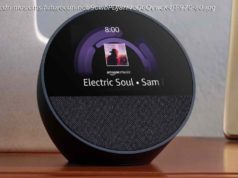They’re growing in popularity, but some are concerned about the safety of connected toys.
Artificial intelligence (AI) can be found everywhere these days, from the smartphones in our pockets to the microwaves in our kitchen. So, it only follows that AI-powered children’s toys are reaching new heights of popularity.
However, when it comes to kids’ toys, how smart is too smart?
With the smart toy market expected to reach $54 billion by 2024, manufacturers are increasingly developing and releasing toys that can connect to the internet and learn as children interact with them.
As there currently isn’t any official ‘mark of quality’ for AI devices (although the Foundation for Responsible Robots are making headway in this area), it’s no wonder that people are concerned about the safety and ethics of giving robots to children as playthings. Could they be hacked over an insecure WiFi network? Could our children even be negatively influenced by wayward robots?
A smart toy is a toy that has a degree of artificial intelligence, meaning it can learn, adjust the way it interacts with the user, react to external stimuli and behave according to pre-programmed patterns. The level of intelligence these toys have varies widely, with some able to use voice recognition, touch sensors and smartphone apps to interact with users.
One of the earliest attempts at a toy with ambitions to include the principles of AI was the Furby, which became the first economically successful domestic robot to be sold to consumers upon its launch in 1998. Children receiving one of the in-demand toys would open the box to find that the Furby spoke only in ‘Furbish’, a synthetic language made up of short phrases and sounds.
Intended to replicate the process of learning a language, the Furby would ‘learn’ more English phrases over time, with the ability to learn certain words and phrases more quickly in response to positive reinforcement from the child. Petting the Furby while it said a particular phrase would encourage it to repeat it again in the future.
Urban legends surrounding the capabilities of the Furby soon flourished, to the point that some intelligence agencies even banned them from their premises in the fear that they would listen in on top secret discussions and later repeat what they had heard.
This, of course, was a myth, as the Furby never had the ability to repeat the phrases its microphones picked up. Still, their startling surge to popularity combined with society’s apprehension about machine learning at the height of Y2K panic, has led to a mistrust of robots aimed at children that still pervades to this day.
So, are we right not to fully trust AI toys? Or, should we embrace the new technology wholeheartedly and leave 20th century fear in the last millennium?
There’s a huge variety of smart toys and child-friendly AI gadgets on the market at the moment, including the cutesy Anki Cosmo robot, the trainable robo-pup Aibo, and even Amazon’s Echo Do t kids’ edition. Frankly, there’s never been a better time to delve into the world of connected toys.






